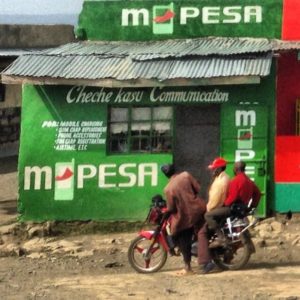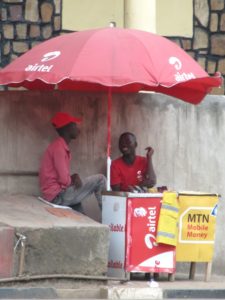
Search
July 27, 2017
Brent Chism
Doing business in emerging markets is hard. Internet access is spotty, power outages common, cash management frustrating, government processes slow and complicated, and corruption is everywhere. And that’s just in the relatively developed and connected urban centers. Selling goods and services to the base of the pyramid (BOP), impoverished rural communities and poor urban areas, is harder still. Even more so if your management requires you to show a healthy profit in your first year of base of pyramid sales.
“Companies came into this space with the expectation that the opportunities would be very big and the financial rewards would be quick, but it’s much more complicated than that,” was the message delivered by Mark Milstein, director of the Cornell University’s Center for Sustainable Global Enterprise, at the Social Innovation Summit in 2014. “You’re talking about organizations that are trying to understand the needs and behaviors of a consumer demographic that they’re not familiar with in places where they don’t normally do business. That’s a lot of unknowns.” [read more]
Some organizations have figured out how to combine technology and people to find some success with base of pyramid consumers — for example Livelyhoods in Kenya, which developed a network of youth and women who sell solar and other products in Kenyan slums and iDE, a TaroWorks client whose sanitation marketing program is creating a market for household latrines in Cambodia.
Among the more promising base of pyramid approaches across Africa is the “agent model”, used by many organizations in East Africa. In particular, the Mobile Network Operators (MNOs) have innovated on the agent model, first to sell airtime and later to build out mobile money cash in/out networks.
Today, these MNO agent networks combine business partnerships, technology and human resource strategies to optimize for selling to and serving a base of pyramid market estimated at more than 4 billion consumers worldwide who individually earn less than $1,500 per year but have purchasing power estimated as much as $5 trillion.
So mid-sized companies and social enterprises should take Steve Job’s advice that “good artists copy, great artists steal” and adapt some of these tactics for their own use. Here are some lessons I’ve learned working with mobile money agent networks.
Companies have to fight so many battles to succeed, that they increase their chance of success by leveraging the networks built by others. As early as 2010, industry observers Ignacio Mas and Amolo Ng’weno pointed out that Safaricom’s partnership strategy played a key role in M-PESA’s early growth. Despite being one of the largest companies in Kenya, Safaricom created partnerships with “master agents” to help manage cash liquidity at cash in/out agents and to manage the agent network. It also used a separate firm to monitor quality and branding compliance among the agent network. Safaricom focused on its core competencies of advertising and technology.

Source: Howard Sherman
When launching its mobile money service in Zimbabwe, EcoCash invested in traditional “above-the-line” media advertising. They ran print, radio and billboard campaigns advertising the service and also promotions such as airtime bonuses for topping up with EcoCash. However, they followed up on the advertising campaign with 300 “below-the-line” brand ambassadors. EcoCash trained the ambassadors, paid them a salary (not commission), and monitored their performance closely. As a result, the brand ambassadors signed up 75% of new registrants. Brand advertising and ambassadors worked together to convince base of pyramid consumers that they could trust this new service with with their money.
In their handbook on “Building a Network of Mobile Money Agents,” Neil Davidson and Paul Leishman at the GSMA Mobile Money Programme made a very astute observation about how MNOs pay their independent salespeople.
“Airtime is sold by retailers as a product. It comes in the form of a physical scratch card, has a clearly marked price, and requires a simple exchange of cash … Conversely mobile money agents offer customers a service: loading or unloading monetary value … [agents also] play a pivotal role in the early days of a deployment in building trust.”
As a result, although many MNOs use a two-tiered channel structure for both lines of business, with aggregators (aka “master agents” or “super dealers”) recruiting and managing networks of agents, MNOs manage the channels and pay commissions differently. Vodacom Tanzania is a great example of this.
Airtime sales networks get paid by purchasing top-up cards in bulk from the MNOs at a discount to the face value. It works like a typical consumer packaged goods distribution value chain. Airtime aggregators get exclusive regional exclusivity and the more volume an agent does, the more money they earn.
In airtime, Vodacom Tanzania pays its sales partners for airtime volume. MNOs, however, incent mobile money aggregators by paying some money for the sign up, but more money for repeated agent activity over time. That way, the MNOs give aggregators an incentive to recruit active mobile money agents and to make sure those agents have sufficient liquidity to transact.
In mobile money, Vodacom Tanzania pays its sales partners for active mobile money agents.
Sad but true, even if you go into this business to have an social impact, you won’t accomplish much if you’re not around long.
Mobile networks have had the biggest positive development impact on the lives of poor consumers in Africa, and I can tell you from working with them, ain’t none of them doing it out of the kindness of their hearts.
MNOs don’t do things for which they won’t make money. In my experience, they are often unwilling to undertake projects that won’t pay for themselves in the same fiscal year. That can be annoying for small partners and it kills a lot of innovation.
But it works. And in a tough business environment, that’s worth a lot.

Source: Howard Sherman
As the Harvard Business Review pointed out in “Profits at the Bottom of the Pyramid” (October 2014):
“Bottom of the pyramid opportunities come in a variety of shapes and sizes, but successes demonstrate a recurrent lesson: the value of focusing on profits … a more realistic assessment of the challenges at the bottom of the pyramid can help companies generate the profits that will make socially beneficial businesses sustainable over the long term.” [read more]
The Consultative Group to Assist the Poor (CGAP) has done a lot of research and work on developing agent networks and offers a how to guide with some helpful tips. The Helix Institute of Digital Finance, a Microsave program, has also developed a lot of insightful reports and content as part of their Agent Network Accelerator program.
TaroWorks supports a lot of strong companies who have mastered these lessons and more. For some great examples, check out our webinars on how Iluméxico sells solar panel systems in Mexico, iDE sells latrines in Cambodia, and Proyecto Mirador sells clean cookstoves in Honduras.
POST TOPICS
Sign up to receive emails with TaroWorks news, industry trends and best practices.
TaroWorks, a Grameen Foundation company.
Site by V+V